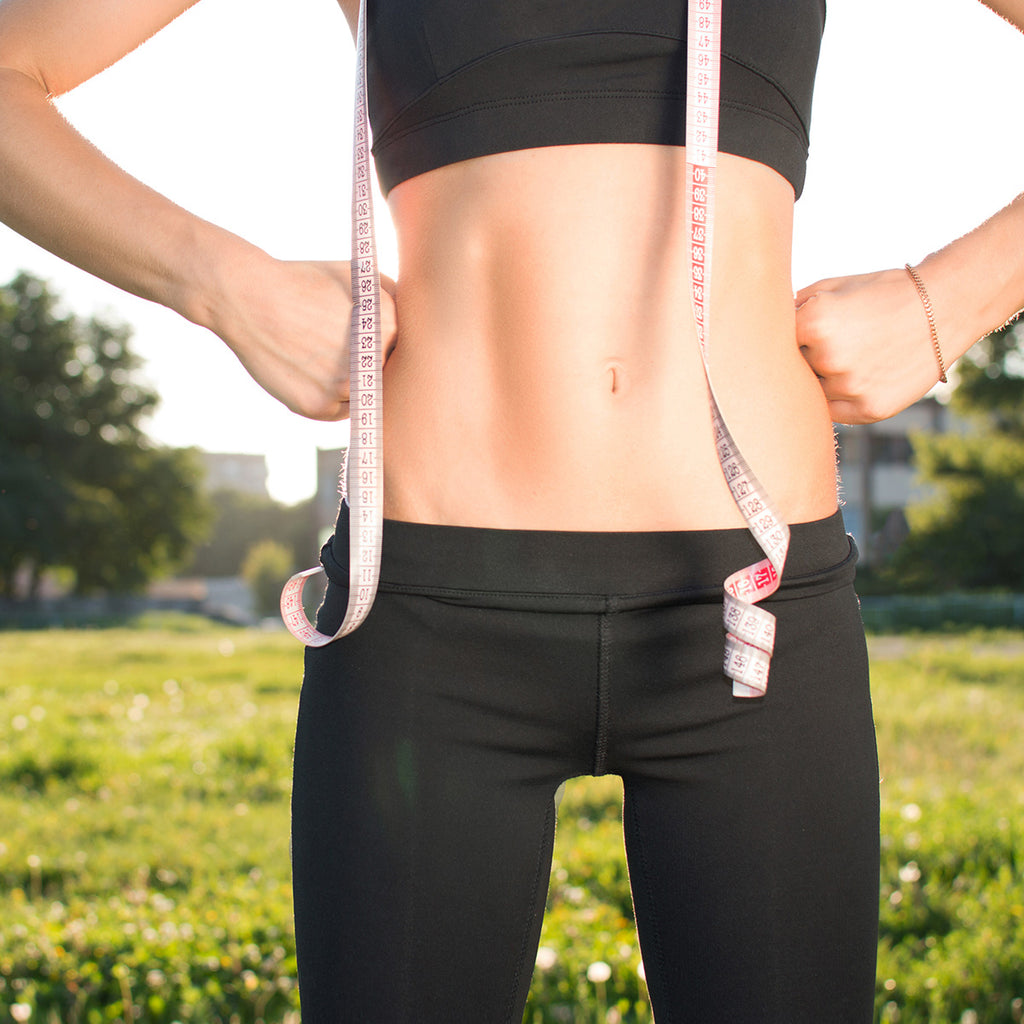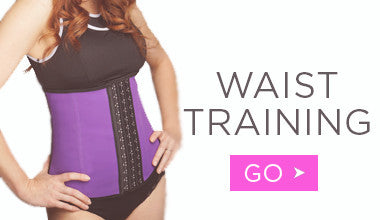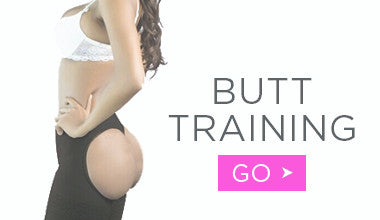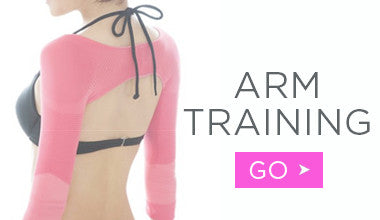
A Beginner's Guide to Safe Waist Training
Aug 17, 18Getting a perfect figure has always been on everyone’s mind. Hitting the gym and working out for hours at the end of the day, to get that perfect figure is a lot of hard work, especially when you have a job. But if you really want to focus on the waist and allow yourself to transform into a diva with an excellent hourglass body shape, then waist training is just the right thing for you
In the beginning, people tend to get intimidated easily and they are not really sure about what to expect from the whole process and are often confused if they’re doing it correctly, so here’s a detailed guide that will help you understand waist training better and guide you through the journey.
What is waist training?
In order to achieve your fitness goals and the desired body shape, you’re required to wear a corset or a cincher that slims and tones your waist, helping you achieve your dream physique. Mostly the waist trainer targets the waist fat layer using thermal activity which causes you to perspire massively. This allows you to get the most out of your workout by burning more calories.
Types of Waist Trainers
Since waist trainers are basically just pieces of garments, they are specifically designed on the body type you’re going for or what your different needs are. There are four types of waist trainers;
-
Performance waist trainers: These focus mostly on your performance and make it easier for you to move around in. The material of the waist band is comfortable, is good at absorbing sweat and can be easily worn under the clothes. These help slim down your waist instantly and make you sweat to your core. They maximize the fat burning process to give you an ideal waist that has reduced up to 3 inches
-
Latex Waist Trainers: They’re meant to be worn on a daily basis and are very versatile. They can easily blend with your clothes and have no seam showing through. Some latex trainers can increase your perspiration as well.
-
Cotton waist trainers: If you have sensitive skin or just want to wear something very light that doesn’t seem to cling on to you heavily, a cotton cincher is perfect for you especially if the weather is hot.
- Steel boned Corsets: To get the most amazing results quick and efficiently, a traditional corset made with steel and laced with your fit is the perfect option for you.
Getting Started
Wearing a corset or any other waist training material tightens your stomach and doesn’t allow you to overeat. If you’re just a beginner, you might need to know how to follow certain things and do them correctly for the best results. Always remember that it will take time for the process to be successful, so don’t feel disappointed if you don’t notice any change in a week. Have patience and stay focused!
Measure Your Waist
You might have measured your waist about two months ago but the waist size can change drastically even within days, due to change in diet or any external factors. Stand in front of the mirror while trying to measure yourself, to be sure you measure the narrowest region of the space which is usually 1-2 inches above the navel for women and 1-2 inches below the navel for men.
Different Shapes of waist trainers
Since the 1400s, corsets were considered an important part of a woman’s clothing. They were designed to not only give a woman’s figure the proper structure it needed but also accentuate her feature. The shape of the corset affects the areas of the body that need to be enhanced. There are usually three shapes of waist trainers that women tend to go for;
-
Hourglass shape provides a curvaceous figure that starts from the ribs and ends above the hips. The hourglass shape is the easiest to wear, since it does not provide drastic results but is great for beginners who are only looking to start and don’t need drastic reshaping just yet.
-
Conical Shape is straight-edged that forms an upside down cone like shape. These are a lot tougher to wear because of their shape as they tend to reshape the floating rib area. This isn’t ideal for beginners who have just started wearing a corset, however, if you’re done with the corset and shift to a conical shape, make sure the lace fitting doesn’t hurt you. This conical corset will give you your results in about 8 months or even a year!
-
A Waist Cincher or a waspie is a small corset that only covers the stomach region of your waist. These only provide support to the belly region without reshaping the ribs. These are the non-restrictive kinds of corsets that are very suitable for beginners who are trying to tone down their tummy first before reshaping the whole waist area.
- The corsets beginners should avoid the S type corsets or the pie stem which can twist and shape a woman’s body into unnatural forms and are not suggested for beginners.
Choosing the right size for yourself
To get the best results from your waist training you have to be careful while you pick the sizes. Choose the one that fits or else they could be very uncomfortable and may even give you a rash or small bruises on the skin, ouch! If you’re trying to tone down, don’t buy a size smaller from your real size; just invest in something with greater compression ability.
Should the waist trainer be tight?
The first thing you need to realize is that when you begin your waist training , the corset will feel tight at first and you will notice how much compression power it has on your waist but your body will learn to be accustomed within a few days.
When you try out the waist trainer, don’t suck your tummy in, stand normally as you would. If the waist trainer starts to form rolls, it’s too tight for you and you may need to go a size up. However keeping a smaller size will come in handy because once you lose weight and get a toned waist, you’ll need to buy a smaller size.
Is feeling pain normal?
The minute the waist trainer starts getting painful or uncomfortable beyond limit, take it off immediately. Your body needs to ease into it, listen to your body.
How many hours should you wear your corset?
It is critical for you to recall the time you started wearing a corset, for matters in determining how major the effect it will have on your body. It is better and more comfortable to wear a corset for a longer time than to buy a really tight fitted one that will suck your stomach in but you’d feel like taking it off after every hour. There are people who wear their corsets all through the day and take them off only prior to going to bed. Some might wear it to bed and only take off while they are in the shower. Some may wear it all day and only take it off for an hour or two to relax on the couch after working. It all comes down to how much effort you’re willing to put into it and whether or not you want to stay in your comfort zone or push the boundaries. Whatever decision you make, try to be consistent with it.
As a beginner, it is advisable that you start by wearing the corset for at least 6 hours a day. You can take them off at night and when you take breaks, like while bathing. Make sure you don’t sleep with a steel corset on as that will not only be uncomfortable but could also damage your back.
How many inches you should reduce?
Do not go for a reduction of more than 4 inches if you’re just starting out. It is important that you give your body the time to get used to the corset. You need to ease into it and once you’ve broken in you can get yourself a further reduction. Comfortable corsets in the beginning will be easier for you to work with. You don’t want to push yourself beyond the limit.
If you don’t give yourself the time to break into your corset, you might end up damaging it. The fabric at the edges tends to be stiff in the beginning, that’s only because it’s not used to your body shape yet. If you hurry through the process you’ll end up hurting yourself. Don’t cinch too much in the beginning few weeks as this will take months. It’s an ongoing process. Just like you give your exercise or diet the time to work its magic, give this a chance too.
Train Safely
Any woman starting out with waist training should know how to go about it safely. Lacing a corset way too tightly could lead to serious medical issues. Tightening a corset 2 inches is enough. It should be tight enough but not too tight to cause you any extreme discomfort or pain. If you feel like the corset is not allowing you to breathe properly, take it off immediately. When wearing it for the first time, don’t tighten it too much, ease into the transformation.
The downside of wearing corsets that are too tight causes headaches, nausea, back and chest pain with breathlessness. It can also make it harder for you to walk. Chances of wearing a really tight corset may result in irritation and itching. Even a normal one will make you sweat and it is advisable that you bathe every day and moisturize right after you are done as the skin tends to get drier every time and extra sensitive.
The Gradual Change
Easing slowly into the process is the best advice out there. Every woman has a different body shape and every body shape will react differently to the corsets. You should not try to force the corset on you or wear it too tight especially if it starts to hurt your ribs. Start with a gradual number and wear it every day. Once you have broken into it and it starts to feel extra comfortable, go an inch shorter. It will take around 3 to 6 months to see initial results depending on your body shape.
Try to save your older corsets as you decrease the size. The older ones can be comfortable to wear as you sleep. The results will vary depending upon what your initial waist was and how often or diligently you wear it.
Taking care of the corset
Your corset will go through a lot trying to take care of your waist, it is only fair if you take good care of it. Cleaning your corset is something you can’t skip out on but there is a way to reduce how frequently you would need to clean it. Wearing a vest or a very thin cotton shirt under your corset acts as a liner. This way your corset is not directly attached to the body and the chances of your sweat ruining the fabric are way less. When you do clean your corset, opt for dry cleaning. Never forget to moisturize yourself and clean the area you sweat or else your skin will start drying up.
What to Eat
As the corset will push tightly on your stomach you won’t be able to eat oily or heavy food. It will also prevent you from eating more. Carbonated drinks and fried foods are a definite no! The plus side is that you will feel full quicker and this can help with cravings and staying dedicated to your weight loss. For best results, stick to waist training friendly diet .
Track the Results
The best way to track your results is to measure yourself with a tape after every two weeks and write it down in a notebook. This will help you determine how long you need to wear the corset to get the respective outcome.









